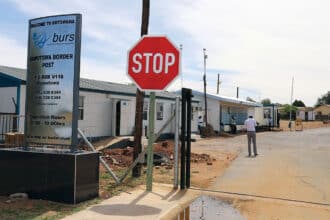BPC Turns to Zambia Electricity Supply Corporation Limited (ZESCO) for help
Botswana’s dreams of being self sufficient in electricity generation as well as being a net exporter of power are encountering challenges with Morupule B power station engulfed by operational challenges. Although both Morupule A and B power stations accounted for 90.4 percent of electricity generated during the fourth quarter of 2023, local power generation declined by 26.4 percent from 889,535mwh during the third quarter of 2023 to 654,312mwh during the fourth quarter.
When compared to the fourth quarter of 2022, the physical volume of generated electricity decreased by 19.0 percent from 807,943MWH to 654,312 MWH during the current quarter. The decline is caused by operational challenges realized at Morupule B power station which is currently under remedial works.
Recently, the ailing Botswana Power Corporation(BPC) was extended a government guarantee of P1.7 billion in order to pay overdue balances of up to P1 billion with major suppliers, procure spare parts for Morupule B power station amounting to P475 million and funding for the power station at P247 million.
“BPC has been facing acute financial challenges and continues to depend on government financial support of varying types. In July 2023, additional funds to the tune of P700 million were approved by parliament as part of the supplementary budget in support of BPC to meet its obligations in respect of ongoing projects and the repayment of their existing government guaranteed loans,” said Minister of Finance Peggy Serame last week emphasizing that approval of the fund will enable BPC to meet its debt service obligations and be on course to secure new generation capacity by end of 2026.
Failure by Morupule B to operate at optimal level has left BPC having to deal with high-cost electricity imports and emergency diesel generation which are currently the other options in place to supply power.
While the country continues to make efforts to generate adequate electricity to meet domestic demand, this downward trend has led to the BPC having to look out to electricity imports to help alleviate any shortages.
Electricity imports increased by 87.7 percent from 276,257MWH during the fourth quarter of 2022 to 518,669MWH during the fourth quarter of 2023.
When compared to the third quarter, the amount of imported electricity increased by 35.6 percent from 382,426 MWH to 518,669 MWH with Zambia Electricity Supply Corporation Limited (ZESCO) being the main source of imported power at 43.1 percent of total electricity imports.
Eskom accounted for 21.8 percent of imports, while the remaining 12.1, 10.3, 8.6 and 4.2 percent were sourced from Electricidade de Mozambique (EDM), Southern African Power Pool (SAPP), Nampower and Cross-border electricity markets respectively.







